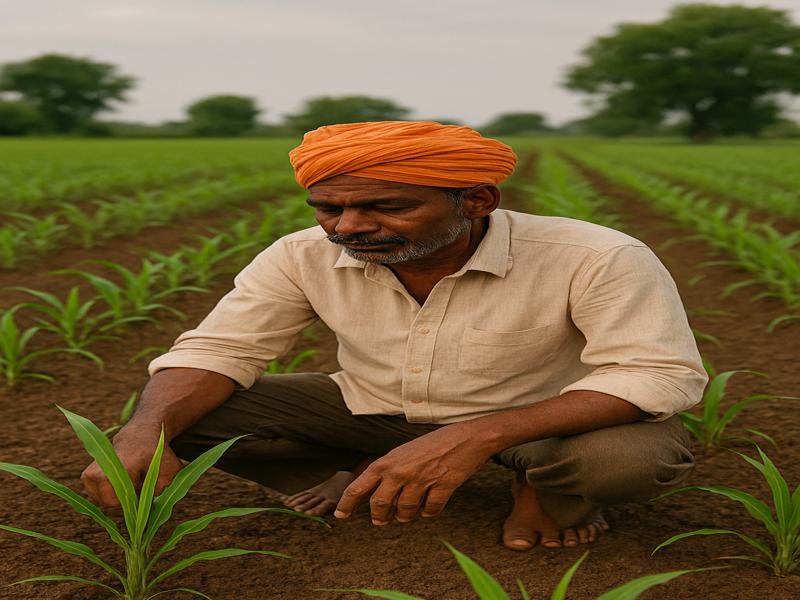Types of Farming

🌾 Types of Farming: A Deep Dive into India’s Traditional and Modern Farming Methods
India is a land of diverse cultures, climates, and terrains—making it home to different types of farming practices. From lush Himalayan terraces to vast plains in Punjab and dry zones in Rajasthan, farmers in India have developed various agricultural techniques suited to their local conditions.
Understanding the types of farming in India is essential for students, agriculture professionals, aspiring farmers, and even travel bloggers exploring India’s rural heartlands. This guide will walk you through the most prevalent farming practices in the country, including subsistence farming, commercial farming, organic farming, mixed farming, and terrace farming.
Let’s explore each of these farming methods in detail.
🌱 1. Subsistence Farming – Farming for Survival
Subsistence farming is the oldest and most traditional form of agriculture in India. Here, the focus is not on profit but survival. Farmers grow crops mainly for their own family’s consumption.
🔍 Key Features:
- Small landholdings
- Use of traditional tools like sickles and ploughs
- Low use of fertilizers or pesticides
- Crops: rice, wheat, maize, pulses
📍 Where it’s practiced:
Primarily found in states like Uttar Pradesh, Bihar, and Madhya Pradesh, where rural populations rely heavily on agriculture for daily sustenance.
Why It Matters for Travelers:
When you visit rural villages, you often experience this type of farming. It gives insight into India’s grassroots lifestyle, making it a compelling story for your travel blog.
🔗 Learn more about subsistence farming practices from the Ministry of Agriculture
💼 2. Commercial Farming – Agriculture as a Business
Unlike subsistence farming, commercial farming is carried out for profit. Farmers grow crops in large quantities to sell in markets, both domestic and international.
🔍 Key Features:
- Large-scale production
- Use of modern machinery and irrigation
- High-yield varieties of seeds
- Heavy use of fertilizers and pesticides
- Crops: cotton, sugarcane, tea, coffee, oilseeds
📍 Where it’s practiced:
Commercial farming is prominent in states like Punjab, Haryana, Maharashtra, and Gujarat.
Why It Matters for Travel Bloggers:
You can highlight large tea plantations in Assam or coffee estates in Coorg—both excellent destinations to explore India’s commercial farming scene.
🌿 3. Organic Farming – Farming with Nature
Organic farming is gaining momentum in India, driven by the demand for chemical-free, healthy food. It avoids synthetic inputs and emphasizes sustainable, eco-friendly methods.
🔍 Key Features:
- No synthetic fertilizers or pesticides
- Use of compost, cow dung, and green manure
- Natural pest control methods
- Rotational cropping and biodiversity
📍 Where it’s practiced:
Organic farming is rapidly growing in states like Sikkim (India’s first fully organic state), Kerala, and Maharashtra.
Travel Tip:
Highlighting organic farms and farm stays in your travel blog can appeal to eco-conscious travelers looking for immersive rural experiences.
🌾 4. Mixed Farming – A Balanced Farming Model
Mixed farming involves both crop cultivation and livestock farming. This type of farming ensures a diversified income and better food security for farmers.
🔍 Key Features:
- Crops + animals on the same land
- Efficient use of resources
- Animal waste is used as manure
- Crops: grains, pulses + livestock: cattle, goats, poultry
📍 Where it’s practiced:
Common in Tamil Nadu, Karnataka, and parts of Rajasthan.
Why It’s a Great Story for Your Blog:
Mixed farming practices are ideal for portraying sustainable rural life. Interviews with farmers juggling crops and cattle can bring authenticity to your blog posts.
⛰️ 5. Terrace Farming – Farming on the Hills
Terrace farming is practiced in hilly areas where land is scarce and uneven. It involves carving flat steps (terraces) into the slopes to create arable land.
🔍 Key Features:
- Prevents soil erosion
- Uses rainwater efficiently
- Labor-intensive but effective
- Crops: rice, barley, vegetables, fruits
📍 Where it’s practiced:
Popular in Himachal Pradesh, Uttarakhand, Sikkim, and the North-Eastern states.
For Travel Bloggers:
Terraced landscapes make breathtaking backdrops for your travel photography and stories. Exploring these regions gives a beautiful glimpse into India’s mountainous agriculture.
🌾 Other Noteworthy Types of Farming in India
➤ Shifting Cultivation (Jhum Farming)
- Practiced by tribal communities in North-East India, where land is cleared by slash-and-burn techniques before cultivation.
➤ Dry Farming
- Used in areas with less rainfall (e.g., Rajasthan), focusing on drought-resistant crops and moisture retention.
➤ Wet Farming
- Practiced in regions with abundant rainfall (e.g., Kerala, West Bengal) to grow water-intensive crops like rice.
These additional farming types show how climate and geography shape agricultural practices across the country.
🧭 Why Understanding Farming Matters for Travel Bloggers
Even if you’re not a farmer, as a travel content creator, knowing about the types of farming in India adds immense value to your storytelling. Here’s how:
- ✅ It allows you to explore rural India with a deeper perspective.
- ✅ You can promote sustainable tourism by visiting organic farms and local agricultural festivals.
- ✅ Farm stays, harvest seasons, and local produce markets become valuable content opportunities.
For instance, visiting a rice terrace in Uttarakhand, or spending a night in an organic farm stay in Kerala, can create unforgettable, niche content for your audience.
📌 Quick Summary Table
| Farming Type | Main Goal | Common States | Special Feature |
|---|---|---|---|
| Subsistence Farming | Family Survival | UP, Bihar, MP | Traditional tools, small plots |
| Commercial Farming | Profit | Punjab, Haryana, Gujarat | Large scale, market-oriented |
| Organic Farming | Sustainability | Sikkim, Kerala, Maharashtra | No chemicals, eco-friendly |
| Mixed Farming | Diversity | TN, Karnataka, Rajasthan | Crops + livestock combo |
| Terrace Farming | Land Optimization | HP, Uttarakhand, Sikkim | Steps on hills, erosion control |
